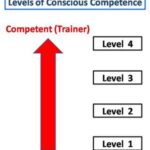Phenomenology as Husserl would describe it was the study of objects and subjects as they appear. Moving away from Kantian philosophy of splitting subjects into the phenomenal and nominal realms, Husserl’s Phenomenology had only one realm split into two, the noema and the noetic. Ridding himself of the nominal realm of Kantian thought left Husserl with subjects only as they are and as they appear. Husserl’s phenomenology relates to beings as the study of a being as an appearance as well as the study of the conscious wherein beings appear. Widely phenomenology is the study of beings as they are and as they appear, Husserl’s noema and noetic, however some see it as much more.
Going further into Husserl’s noema and noetic is necessary to understand his concept of phenomenology. Using a table to describe his notions of noema and noetic Husserl calls the table that one sees or the idea of the table the noema. One does not really see the table but however sees the idea of the table. According to Husserl the idea of the object at hand (the table) is only there because of a previously conjured thought and knowledge that the table is in fact a table. This is shortly described as Husserl’s nuema.
If one had no prior knowledge to the table or no noema, they would form their own ideas and start to think of the table as it appears and how one perceives it. For instance, a brown, wooden, plank supported by four planks on each corner. This description of details on what the table appears as, can be described as the noetic, how the table appears. Husserl furthers his case by proclaiming that one can only view on side of the table at a time. One must circulate around the table in order to receive the true so called appearance of the intended table.
Husserl views time on a past, present, and future scale with little attention to the present as an actually frame of time since it passes almost instantly. Time to Husserl is not so much as a number or duration but as a tool to describe how ones comes about seeing the appearance of beings and objects.
One could easily say Husserl’s most important views on time in respect to the nuema is the past. Husserl uses the past to describe retention or all the knowledge and previous perceptions on subjects one has encountered in their life. Husserl dictates that retention is why the ego or “I” according to Husserl calls that brown, wooden plank, supported by four legs in the middle of the room a table. If we had no previous knowledge of the table for instance, once we left the room in which the table was in, and the table was no longer in sight, retention would remember how the table appeared so the next time we saw the table it would automatically be remembered as a table. This is because our consciousness has sketched the idea of the table into our retention which according to Husserl has the “thematic character of keeping-a-hold-of”. This “thematic character of keeping-a-hold-of” as described by Husserl can be thought of memory in a sense.
The present, Husserl’s present is an instant, the instant in which the noetic is all that actually appears. Once one is out of the present retention and the noema takes over once again and the idea of what just entered or filled the emptiness of ones perception is perceived. Husserl believes in order for something to become present in one’s perception there must first be absence of subject.
During the present and future Husserl believes passive synthesis is in effect and that unknowingly to oneself synthetic judgments are being implemented from past retentions to form a noema or idea of a subject. These judgments are known as passive synthesis and allow ideas of subjects to form with out consciously knowing.
Husserl main claim in his description of time with respect to actually access subjects as they are comes with his phenomelogical method. This method is derived from suspending ones synthetic judgment. By suspending ones synthetic judgment you are actually in a sense stopping time as it is known so you can fully understand the subject. This is known as epoche or phenomelogical reduction, the momentary suspension of your judgment of the world. In essence, this is where the pure noetic can be found and a subjects true appearance can be realized.
Husserl’s phenomenology due to time can receive a quick summary with three main points; there is difference in the world as we take it and as we see it, the noematic world is conceived by us passively because of retention and expected in protention, and finally unfufillness gets filled and then moves into absence again, everything is always moving from absence to presence and back. This last point is why is you are able to suspend your synthetic judgment and enter into epoche time will actually stop. One would be able to focus entirely on the noetic of the subject at task while suspending all other unconscious judgments and actions.
While Husserl’s ideas and conjured thoughts about phenomenology are arguable they are by no means provable and provide several flaws. Most of these flaws are found while trying to prove his phenomelogical method through the sense of retention, the present, and retention. However his analysis of escaping Kantian thought and going back to things strictly as they appear, leaves room for criticism as well.
In a sense, all early phenomenology as Husserl sees it is flawed and has been improved since his original publication. If subjects are simply being, and are as they appear there is no starting point in which subjects came from or originated. With Kantian thought there is a nominal realm in which a beyond factor can be contributed to origination of subjects, and there is something beyond the object and phenomenal realm, something greater and beyond explaining by appearance. For Husserl everything is about going back to things themselves, leaving him stuck in self centered world.
Furthermore, Husserl never fully explains his definition of “being”. There is no concrete way for someone using Husserl as a basis to describe things or beings as they are if one can not fully grasp what a being or subject is. He describes the world as everything that is involved in it, but leaves no explanation for objects and beings other than that which is physically characteristic and describes emotions or the cognito’s of the ego as not objective and therefore not as beings in the natural world. However are emotions, memory (comparably to retention), feeling, and the etc not objective in the natural world and part of the noetic judgments one makes when putting something into their retention leading to one’s noema. The main problem with this is if these characteristics are not involved into Husserl’s objective world (the phenomenal) how does he describe and account for these things which are proven to exist? These things outside of the phenomelogical (ie. thought process, memory, and conscious) must be somewhere besides the phenomenal if they are outside the objective world, yet where if there is no such thing as a nominal realm.
The biggest flaws in Husserl’s phenomenology however come with his explanation of time with respect to his phenomelogical method and epoche. Phenomelogical method allows access to things as they are, not only as they appear. In order for this to happen one must suspend synthetic judgment therefore suspending their passive synthesis from things brought from past retentions. This will finally in turn supposedly lead to epoche where you are momentarily suspended of your judgment of the world in order to see things as they actually are, not only as they appear because of your retention. This is allowed because if you can control your passive synthesis you can see things in the absence of the noematic. In reality this may only happen once in your life and if you achieve it during your life it will surely end it.
The one time you may actually be in epoche in your entire life is during your infancy. You have no retention for the first hours of your life and everything is the noetic to you. Things that are passive later on in life must be noetically created in order to survive at the moment. This may be the only instance where the present may exist and the moment where protention is the only essence of time. This can be contributed to the fact that since you have no retention everything must be learned and the only thing you are subjected to is the noetic and things are they are since there is no previous retention whatsoever to anything and how it might appear. This is the one and only time pure epoche may take place in one’s life since a suspension in synthetic judgment leads to a result of an end to ones passive synthesis.
An end to ones passive synthesis is required for a suspension of your judgment of the world to come to a halt. Passive synthesis is everything one has learned in from past or all of ones retention, including breathing, unknowing moving your mouth to talk, and other actions of the sort. In order for passive synthesis to be suspended you must be fully aware and control everything you are doing. This is and only is the time where epoche can take place after ones birth and even then it is impossible to occur because of one or two results.
If you suspend everything just to see the world as it is then you will not stop time as it has been previously believed but in that instant your life will end because you have stopped all of the passive synthesis’ that keep your body functioning and alive. Stepping back from all judgments and previous retention is impossible for you can not stop doing everything you have learned since birth intentionally with out killing yourself. This experience of stepping back to observe the objective world is rumored with death as your so called soul and for this case will be called your ego observes everything as it is.





